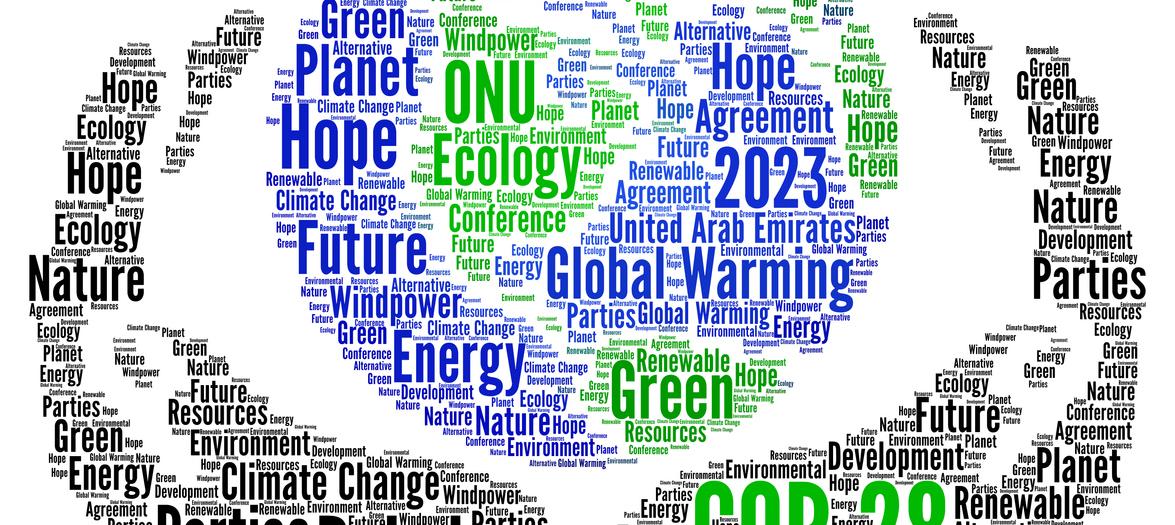-
https://climateinstitute.bmo.com/static/images/clock-icon.svg
5 Minute Read
-
Listen
-
Stop
-
Text Bigger | Smaller
The impact of extreme weather patterns, mega-fires, and policy shifts toward a low-carbon economy are putting pressure on finance teams across industries to answer the question: is this business ready?
In 2023, we have experienced the hottest month recorded on Earth in July and Canada's worst wildfire season in recorded history, which affected millions across North America with toxic air quality. Historic flooding hit some parts of the U.S. in July, and nearly a quarter of the U.S. faced drought in August. These risks of 2023 come on the heels of the hottest decade on record. From hurricanes to hailstorms, extreme weather presents a risk to companies.
Regulators Explore Climate's Impact on Financial Stability
Meanwhile, financial regulators have been trying to ensure business leaders—particularly those with finance responsibilities—incorporate climate risk into their modeling and planning. Businesses can expect increased scrutiny from policymakers and added regulation to address the rising threat posed by a warming planet.
Treasury Secretary Janet Yellen, who has called climate change "an existential threat," led a 2021 regulatory investigation that concluded, in Yellen's words, that "climate change will likely become a source of shocks to the financial system in the coming years. As climate change intensifies, natural disasters and warming temperatures can lead to declines in asset values that could cascade through the financial system."
Meanwhile, since then, financial regulators in both Canada and the U.S. have stepped up their focus on the impact of climate change on financial stability, disclosure requirements, and risk management.
For CFOs, treasurers, and other financial decision-makers, risks from rapid global warming have increasingly come into view at a time when their own roles have been changing. Many are taking on added strategic leadership responsibilities, and as a result, they are collaborating more with IT, sales, legal, and other functions to guide their businesses.
Those alliances may prove to be even more important as companies address climate change. Finance decision makers should embrace their roles as sustainability leaders and guide their businesses through new financial risks born from the climate crisis. Anticipating risks to present-day financial transactions will be vital, but also risks to future revenue streams, the cost of capital, supply chains, and regulatory disclosures. The Fed and others have already zeroed in on several risks to business and the financial system.
"There's growing and broad consensus that climate change poses systemic risk to the U.S. financial system," says Dave Jones, The Nature Conservancy's Senior Director for Environmental Risk. Jones was California's insurance commissioner prior to joining The Nature Conservancy.
Here is a rundown of the financial risks and suggestions for how companies can build resilience against them in 2023 and beyond.
Business Leaders Are Focusing More on Transition Risks
Only in the past several years have we managed to quantify the private sector financial impact of the climate crisis. This is important to understanding the system-wide effects of climate change rather than assuming incorrectly that risks are only concentrated in regions prone to wildfires or extreme weather events.
The root issue is the difference between physical and transition risks.
-
Physical risks arise from damage to property, infrastructure, and land as a result of climate change. Think of the more than 2.5 million homes across 14 Western U.S. states that property data analytics firm CoreLogic CalFire says are at high risk from wildfires. Or the US$39 billion insurers in wildfire damage have paid out worldwide from 2018 to 2022.
-
Transition risk, a relatively new area of focus, refers to the economic and financial impact of the global shift to a low- or zero-carbon economy. "This transition can be driven by technology, market forces, or policy. But as it occurs—gradually or abruptly—it can have an impact on the valuation of assets that are related to the greenhouse gas-emitting sectors," Jones says.
More than 200 of the world's biggest companies, representing US$17 trillion in market capitalization, valued the climate risks to their businesses at nearly US$1 trillion, according to CDP, a non-profit that runs a global environmental disclosure system. Most of the companies indicated they consider addressing transition risks a priority.
Of course, both transition and physical risks can have a financial impact on corporate operations and business.
Carbon Footprint Can Push Up Cost of Credit
Recent research focuses on exposures to climate change via securities markets and financial counterparties. The EDHEC-Risk Institute, a think tank in France, has found credit risk for companies rises in tandem with their emissions. Put another way, the larger a company's carbon footprint, the bigger the risk of default.
The authors of the EDHEC study looked at a decade of data from 458 issuers of U.S. investment-grade debt. They found a strong correlation between the least-polluting companies as measured by emissions and carbon intensity and the lowest default risk—and vice versa. The results held firm even when excluding companies in the energy and extractive industries.
Capital markets penalize corporate borrowers with bigger carbon footprints, factoring in expectations for higher carbon prices and tougher regulations, especially following the Paris Agreement. "This finding supports the view that financial markets are increasingly pricing climate change exposure of listed companies, and such exposure affects the overall creditworthiness of companies," the paper says.
One of the implications is that companies, particularly those from polluting industries, may find capital markets increasingly more expensive to access.
Moody's actually did an in-depth analysis in 2020 and found 13 global sectors with a combined US$3.4 trillion in debt have very high or high environmental credit risk. Total debt held by sectors with heightened environmental credit risk rose 49 percent since 2018, the ratings agency said.
Supply Chains Pose Event-Driven Financial Risks
Another area where finance can take on a leadership role is with supply chains and the financial implications of climate-driven disruptions. It's clear that rising sea levels and natural disasters have already threatened ports and broken global supply chains. Hurricane Harvey in 2017 disrupted crude oil deliveries to refineries and caused gasoline prices to spike as much as 16 percent in some parts of the U.S.. And the frequency of climate-related events has been increasing.
The first seven months of 2023 have dealt the U.S. 15 extreme weather events with over US$ 1 billion in losses each. In 2022, there were 18 extreme weather events in the U.S., the fourth-highest year on record. The average annual extreme weather events over the 1980s, 1990s, 2000s, and 2010s were 3.3, 5.7, 6.7, and 13.1, respectively. In the last three years, the average has been 20.
More than half (55 percent) of global trade passes through seaports that have a high risk of at least one climate-related event. About 8 percent of trade is vulnerable to three or more events.
A focus over the past several decades on creating efficient supply chains and reaping the benefits of higher productivity may have tipped the balance away from resiliency.
The implications of a higher frequency of supply chain disruptions are uncertain. However, CDP estimates companies will be facing up to US$120 billion in increased supply chain costs from environmental risks by 2026. These are costs tied both to severe weather and price spikes for raw materials, as well as regulatory changes and market shifts.
Financial decision-makers can lead by asking incisive questions like, "How would more frequent disruptions impact the availability of working capital or the status of payments?" Some have suggested that companies should extend the typical time horizon for risk mitigation plans from five to 20 years. But financial planning over the next five years is challenging at the best of times. With climate-related supply chain disruptions increasing, forecasting out 20 years might be a tall order.
Mitigating Climate Risk
Mitigating climate-related financial risks calls for a different way of identifying vulnerabilities. Banks, finance executives, and investors often make decisions based on benchmarks. However, historical information on economic and financial performance can be less relevant to assessing climate risk because the risk depends on future changes in the climate and operating environment.
A scenario-based approach is potentially more effective. Leaders should consider various scenarios, for example, one in which transition risks dominate, another where physical risks are more present, and a third in which both transition and physical risks are potent.
Here are some suggestions on how to address the financial risks of climate change.
1. Credit Risk
A good starting point for managing climate risks is transparency about carbon footprint. Companies should expect increasing regulatory requirements on disclosures. For now, the Task Force on Climate-related Financial Disclosures (TCFD) has developed voluntary climate-related financial risk disclosures. Climate credit analysis is a new field of study. A few consultancies, such as Moody's, S&P, and Oliver Wyman, have developed specialized expertise. Finally, CFOs and other financial decision-makers can consider forming multifunction task forces (including operations, sales, compliance and legal, and others) to perform climate stress tests and scenario analysis to expose vulnerabilities.
2. Supply Chain Risk
This is an area where finance leaders can work closely with business partners to conduct risk diagnostics. Many of the lessons learned during the pandemic will guide this work related to climate change. Supply chain managers will first need to identify which of their suppliers are essential for business continuity and map them to potential physical and transition hazards. Does insurance protect against disruptions? What time horizon is being used for risk mitigation plans? There is a high level of complexity involved, particularly because of the global nature of modern supply chains. That is why finance departments may want to consider enhanced capabilities to counteract risks, including real-time monitoring of payments and treasury centralization.
Featured Publications

“It was a great privilege to be at COP28 representing BMO and helping advance the matter on c…

Corporate climate action appears to be reaching a new phase. More companies in the United States an…

BMO Arranges Green Financing to Fund New Lawson Centre for Sustainability, Trinity College's Mo…





